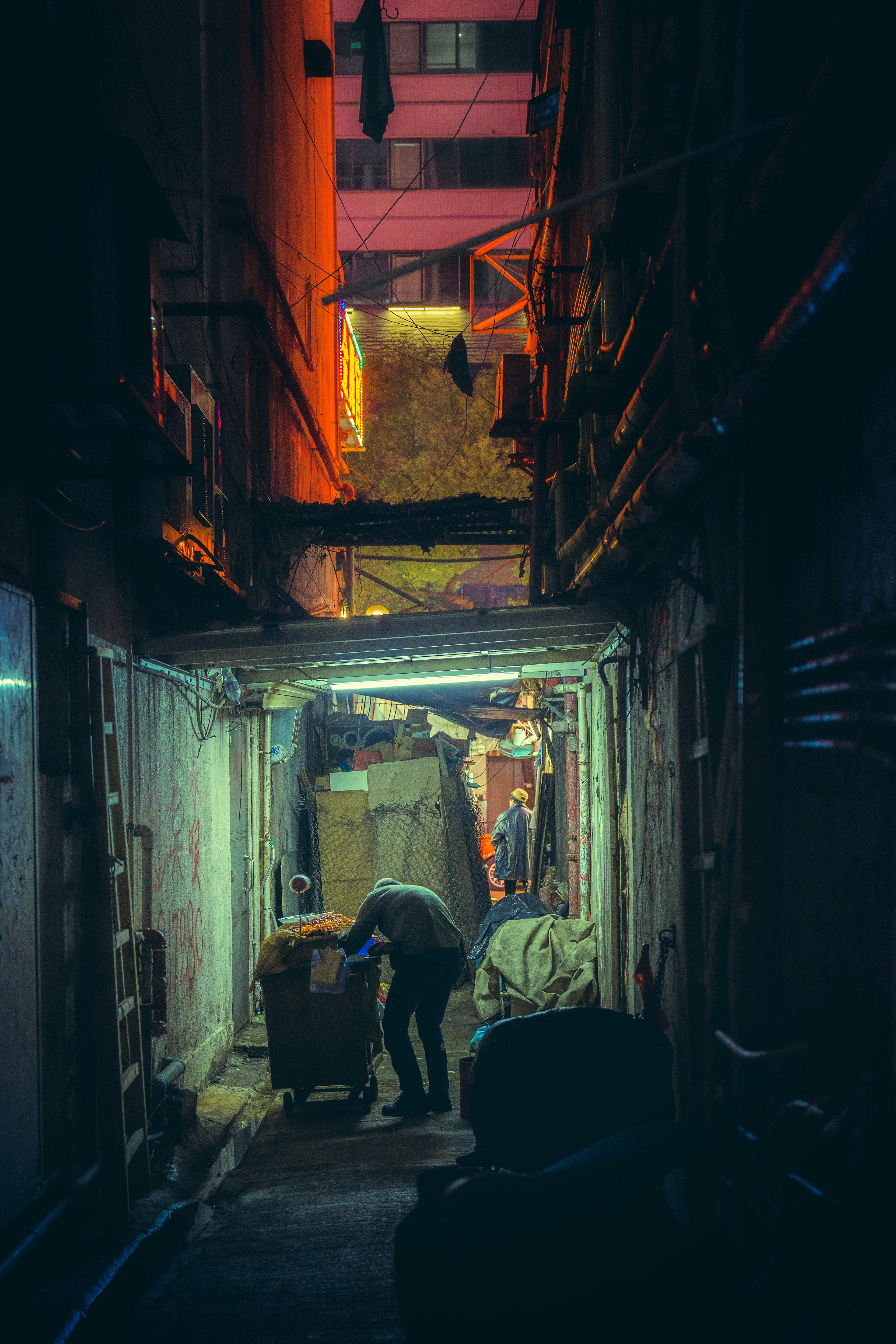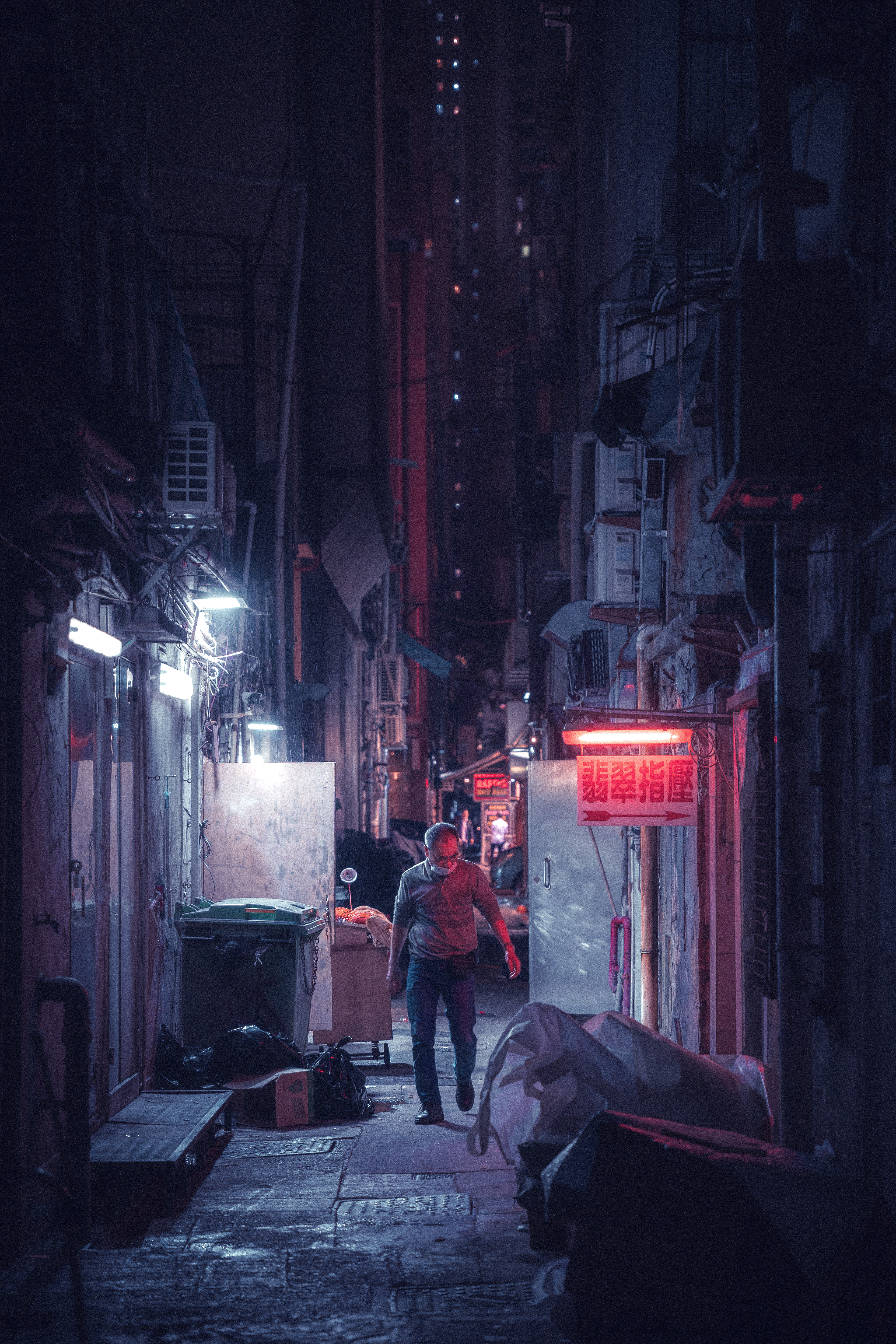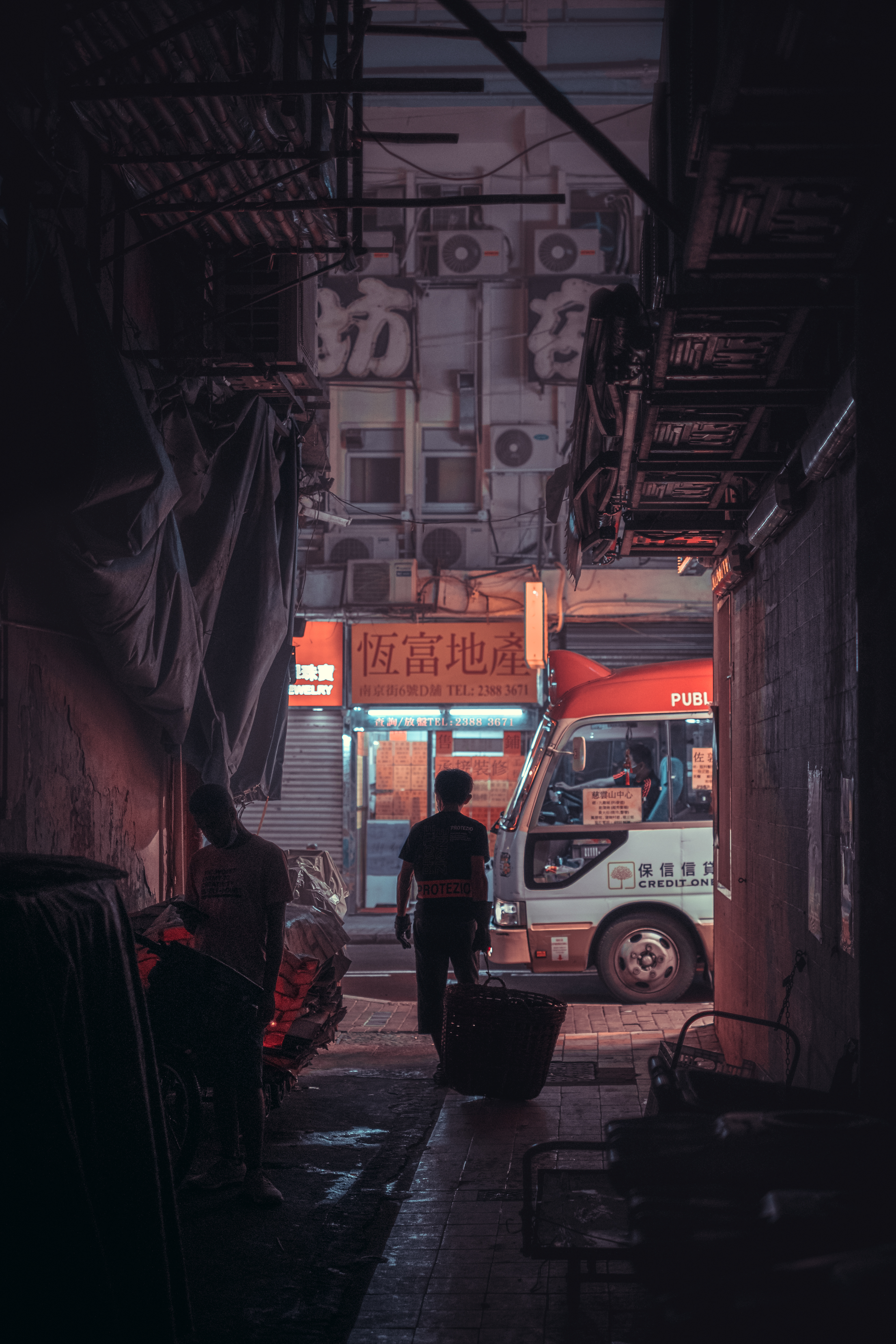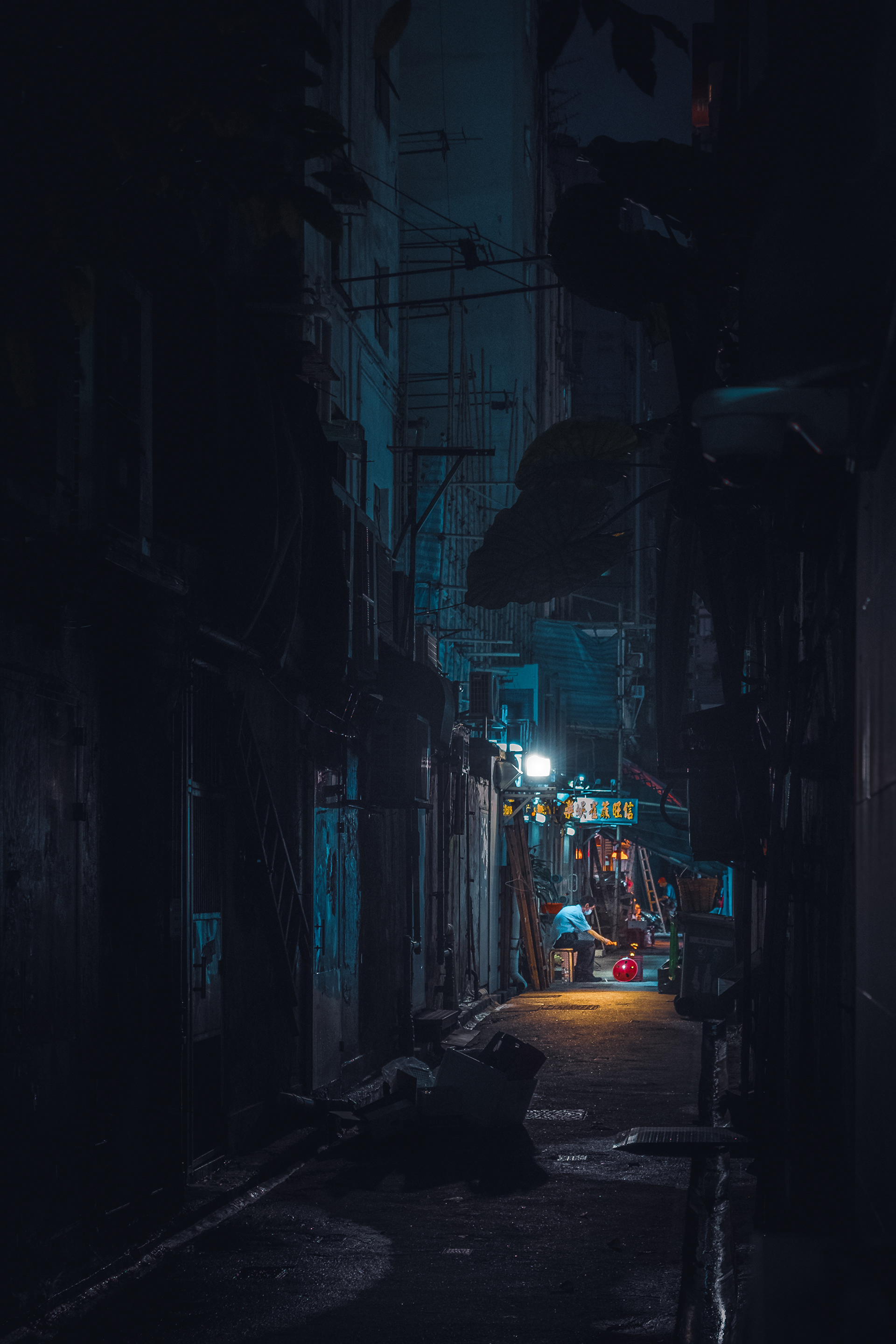






















In many cities, the term “back alley” conjures unsavory images—drug deals, muggings, rat infestations. But in Hong Kong, with its high population density and low crime rate, working class citizens use back alleys as a sort of extended living space. In this city of 7 million, the average person has just 160 square feet to his or herself. The space shortage is driven by exorbitant housing prices. Some of the city’s poorest residents live in so-called “cage homes,” subdivided apartments barely large enough for a bed and a hot plate. In such conditions, space-starved citizens look outward for breathing room and solitude. Hong Kong’s vast network of narrow alleys, a vestige of 19th century Southern Chinese urban design, provide just that. Workers use the alleys for smoke breaks, stashing plastic stools behind air conditioning units and hiding cigarette packs in grates. Residents use their alleys as extra closet space, balancing pairs of shoes on pipes or hanging laundry from coat hangers suspended from window grates. People also beautify these often grimly gray and tiled alleys with flowerpots, turning unloved public space into makeshift gardens. (Emily Matchar)






















